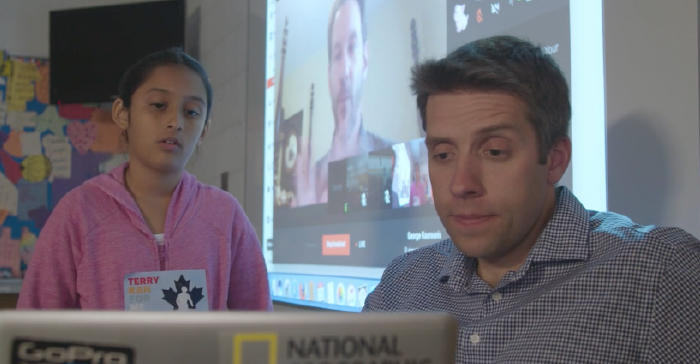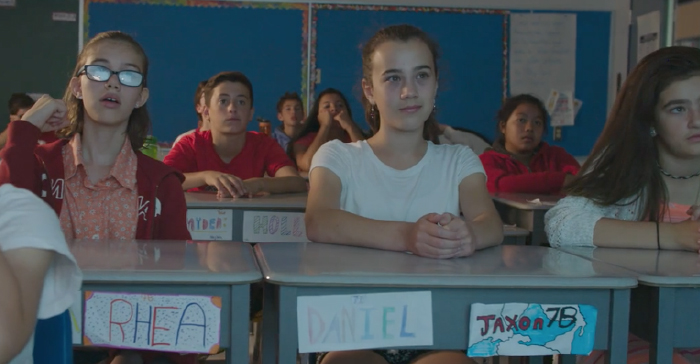I really became a teacher to share my love of and curiosity for the world.
It was a love of diving that inspired Joe Grabowski to become a teacher — which is probably why he’s always striving to take students deeper. As the creator of Exploring By the Seat of Your Pants, he has helped organize hundreds of virtual hangouts on Google and Skype, giving students in classrooms across North America a chance to learn from and interact with working scientists in the field. Through their chats and question periods, Joe hasn’t just helped reveal hidden corners of the earth to his students, he’s instilled a sense of global citizenship and environmental stewardship.
I really became a teacher to share my love of and curiosity for the world. And to be honest, early on, I just wasn’t happy with the kind of teacher I had become. I thought there was too much textbook, too much pen to paper. I wasn’t having a lot of fun, so I sort of knew there was no way my students were.

Four years ago, over the summer, I was looking for ways to make the classroom come alive, and I happened upon this story about Fabien Cousteau, the grandson of Jacques Cousteau. He was going to be going to the bottom of the ocean for 31 days, and he was going to be sharing the experience with classrooms around the country via Skype. Pretty quickly I knew that mine had to be one of those classrooms, so I began reaching out to his people.
And then it occurred to me that maybe there were more opportunities like this — maybe my students could be learning from experts all over the world. I set a goal that first year of making 50 connections like this with scientists; they ended up being so much fun we got a little carried away and ended up doing 52 that first year. We got to visit researchers on the edge of a volcano in Italy, we were with a penguin colony in Antarctica — but honestly, even just talking to these explorers and scientists in their living rooms was a real thrill.
After two years, I really got to thinking, it’s a shame that only 25 or 30 students get to share in this. So I started to reach out to other teachers I knew, and the response was amazing. I tried to keep it low-cost and easy, so it was available to everyone, and people couldn’t wait to participate. We’ve been able to reach thousands of students now, and there are more interested every year.

And you can see the effect it has on the students. One of my favourite examples involves sharks. I love diving, and so one of the researchers I had early on was there to explain how important sharks are to an ecosystem — their role as an apex predator. We did some more research after the talk, and we learned about a shark cull in Western Australia. We used our directed writing time to write letters to the premier of Western Australia, asking him to end it. He actually wrote back, dismissing them, and so then we wrote again, this time with even more research.
It was crazy: we made headlines here and in Australia, we took part in conservation efforts in Western Australia. That’s kind of the power these connections have. It can show students that just because they’re young, just because they’re far away, it doesn’t mean they can’t still have an impact, can’t still make their voices heard.
Through EBTSOYP, I’m able to take that message of environmental stewardship and put it into classrooms across North America. I’m hoping that’s inspiring students to care about what’s happening to our planet, and to want to do something, to be involved.
I went to this school, and the high school next door. In high school, I had a biology teacher named Mr. Donaghy. Something about being in his classroom, seeing his excitement for our natural world, it always stuck with me. I learned so much about the natural world from him, and I think, in a way, that’s the teacher I’ve tried to be.